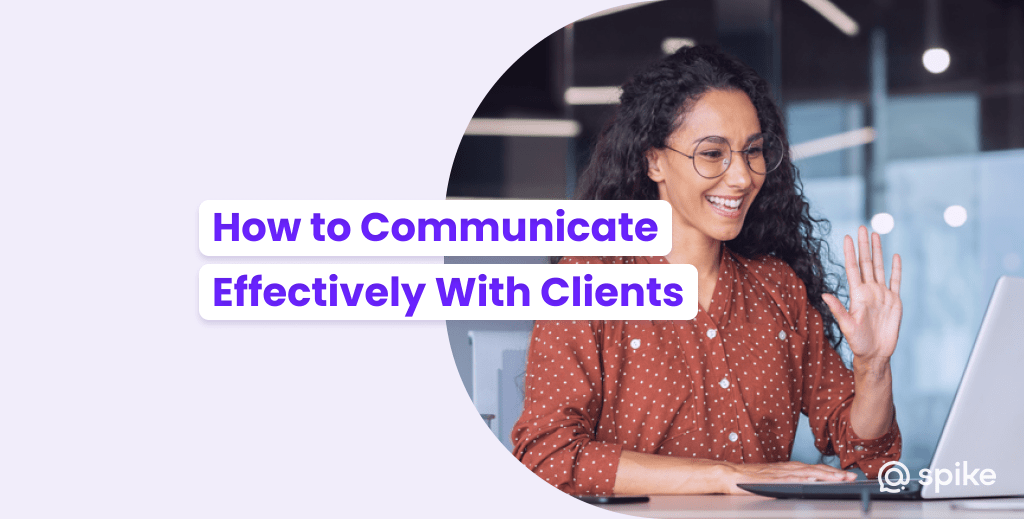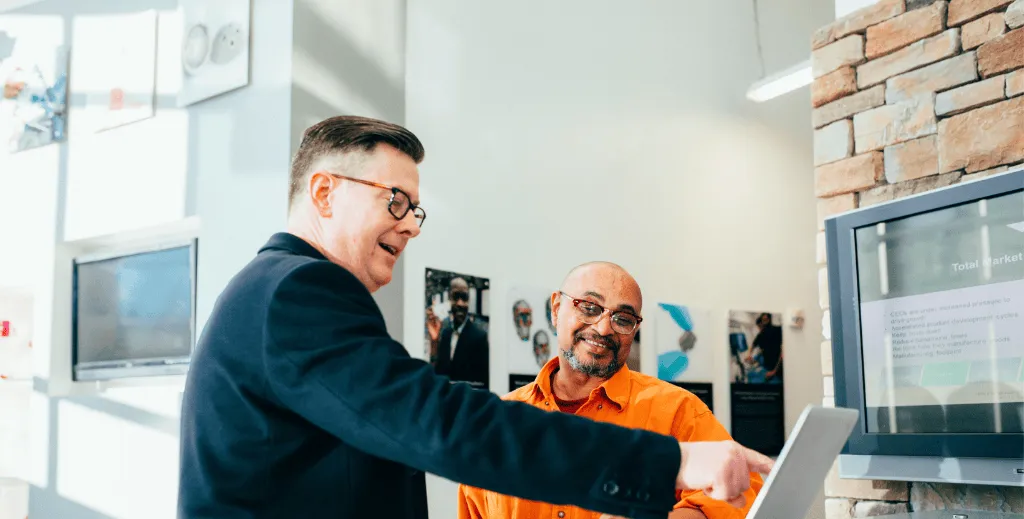How to Communicate Effectively With Clients

Developing a healthy client communication strategy is key for businesses aiming to grow and survive. Client communication is about cultivating relationships, building trust, and clarity. It helps teams to develop an understanding of client needs.
An effective client communication strategy ensures that clients and service providers maintain open lines of communication for feedback and continuous improvement. This enables businesses to adapt and meet their clients’ evolving demands.
This article offers key insights and best practices to refine and hone your approach. This ensures that every interaction with your client adds value, strengthens relationships, and solidifies your business’s position as a trusted partner.
What is Client Communication?

Client communication refers to all forms of communication between a business and its clients. This includes written correspondence like emails, contracts, and verbal communication through phone calls or in-person meetings. It also extends to non-verbal cues during face-to-face interactions.
Why It’s Essential to Improve Client Communication
Good client communication is foundational for establishing trust retaining clients and building long-term relationships. Effective communication strategies also enhance sales pitches. Conveying value propositions, ensuring project alignment, and facilitating efficient task delegation.
On the flip side, failing to focus on client communication leads to misunderstandings and decreased client satisfaction. Investing time and resources into developing and refining your client communication skills is essential for securing a competitive edge in today’s market.
13 Best Practices for Effective Client Communication

By following these guidelines, business leaders can significantly enhance their client interactions, ensuring clarity, efficiency, and satisfaction in every exchange. From active listening to maintaining a positive tone, these strategies build trust, improve understanding, and strengthen the relationship.
1. Practice Active Listening
Truly hear your clients’ words to better understand their needs and concerns. Seek to solve their problems
2. Provide Regular Updates
Keep clients informed about the progress of their projects to build trust and transparency.
3. Maintain Personalized Communication
Tailor your communication style to match each client’s preferences. If they prefer email, use email. If they prefer video calls, use that.
4. Be Clear and Concise
Be clear and to the point in all communications to avoid misunderstandings. Don’t be long-winded.
5. Use the Right Tools
Use appropriate communication tools (email, team chat, project management software, video calls) for different needs. Email remains a dominant tool for client communication, with 55% of people using it in 2024.
6. Seek Feedback
Regularly ask for client feedback to improve services and communication.
7. Train Your Team
Ensure all team members are skilled in effective communication techniques and understand how to work with clients.
8. Proactive Issue Resolution
Address potential issues before they become problems to demonstrate reliability.
9. Adapt to Client Preferences
Adjust your communication methods according to the client’s preferred channels and styles.
10. Maintain a Positive Tone
Keep the conversation positive in challenging situations to foster a better working relationship.
11. Follow-Up Regularly
After completing a project or delivery, follow up with clients to ensure satisfaction and gather any additional feedback.
12. Use Visual Communication
In digital presentations, Use diagrams, infographics, and videos to convey complex information more effectively and engagingly.
13. Define Project Expectations
Clearly outline what clients can expect regarding deliverables, timelines, and communication frequency right from the start to avoid any confusion about expectations later on.
Wrapping Up
Remember that the path to becoming a client communication expert is an ongoing practice and critical for building lasting business relationships. Implementing the ten best practices from this blog will improve your interactions and position your business as client-focused, first.
For those seeking an optimal platform to enhance client communication, Spike Teamspace brings a tailored and complete solution designed to meet these needs effectively. Explore how Spike Teamspace can transform your client communication strategy, ensuring your business remains laser-focused on serving clients in the best way possible!
FAQ
Regular updates are key, but the frequency should be tailored to the project’s needs and client preferences. Establishing expectations early on is important as part of your client communication strategy.
Address feedback positively and constructively. Use it to improve your services and strengthen the client relationship by showing that you value their input.
Absolutely. Effective communication can lead to higher client satisfaction, retention, and even project growth, all of which contribute positively to your business’s success.
Gain Communication Clarity with Spike
You may also like
10 Rules for Creating Your Professional Email Address
Want a professional email address? Here we look at the things you need to think about to create an email address that reflects your career!
Read More10 Strategies for Employee Engagement and Brand Advocacy in 2024
Explore 10 strategies to elevate employee engagement and foster brand advocacy in the evolving workplace of 2024.
Read MoreFrom Cubicles to Couches: Is the Hybrid Workplace the Future?
Hybrid work—involving both remote and in-person tasks—increases productivity and flexibility at home while leveraging the social benefits of office gatherings
Read More



